Discover the Best Board Games for Every Player
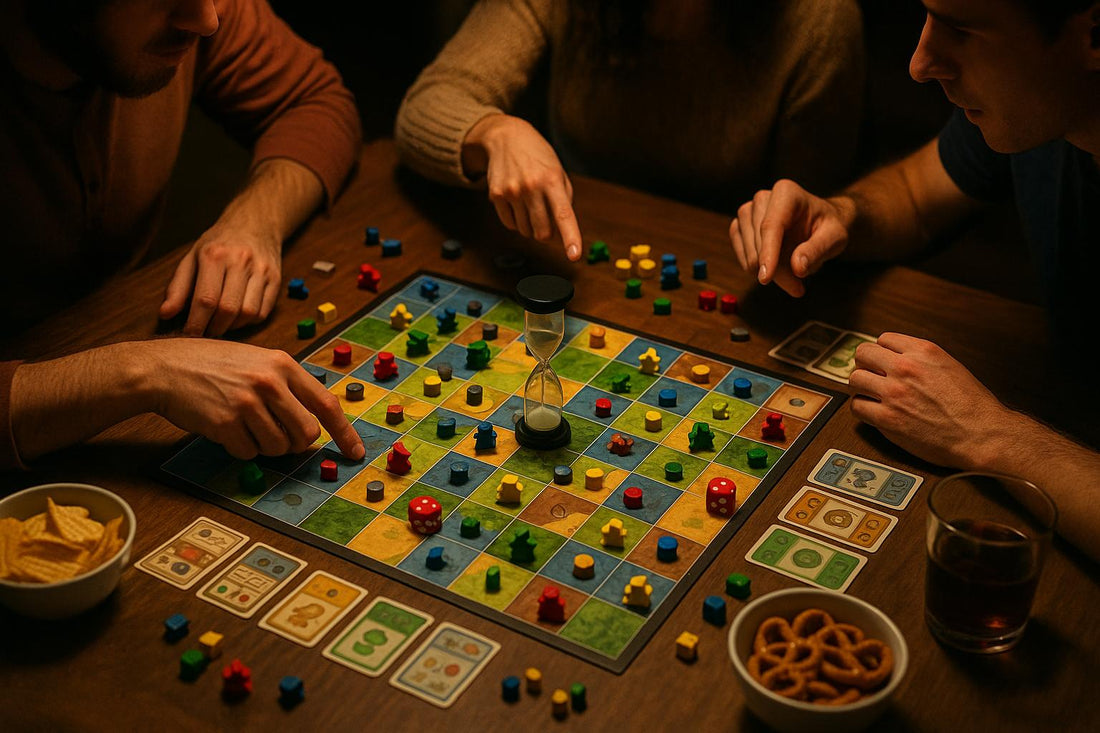
Top 7 Board Games with Timed Rounds
Timed board games add excitement and urgency to your game night, challenging players to think fast and work together under pressure. Here’s a quick look at seven standout games that use timers to create fast-paced, engaging experiences:
- 5-Minute Dungeon: A cooperative card game with a 5-minute timer. Perfect for quick, team-based challenges.
- Magic Maze: A silent, cooperative mall heist with a sand timer and unique communication rules.
- Space Alert: A real-time spaceship survival game with a 10-minute audio timer.
- FUSE: A 10-minute bomb-defusal game that demands teamwork and quick decisions.
- Project: ELITE: A tactical, real-time alien battle with a 2-minute timer for intense action.
- Galaxy Trucker: A spaceship-building race using a sand timer for chaotic fun.
- Time's Up! Party: A timed charades-style game with evolving clue-giving rules.
These games vary in complexity, duration, and player count, offering something for everyone - from casual players to seasoned strategists. Here's a quick comparison to help you choose:
| Game Title | Timer Type | Players | Game Length | Difficulty |
|---|---|---|---|---|
| 5-Minute Dungeon | Digital/Phone | 2–5 | 5 minutes | Easy |
| Magic Maze | Sand Timer | 1–8 | 15 minutes | Moderate |
| Space Alert | Digital Timer | 2–5 | 10 minutes | Complex |
| FUSE | Digital Timer | 2–5 | 10 minutes | Moderate |
| Project: ELITE | Sand Timer | 1–6 | 30 minutes | Complex |
| Galaxy Trucker | Sand Timer | 2–4 | 45 minutes | Moderate |
| Time's Up! Party | Sand Timer | 4–12 | 40 minutes | Easy |
These games combine strategy and speed, making every second count and creating memorable moments for all players.
Top 10 Board Games You Can Learn and Play in 30 Minutes or LESS!
1. 5-Minute Dungeon
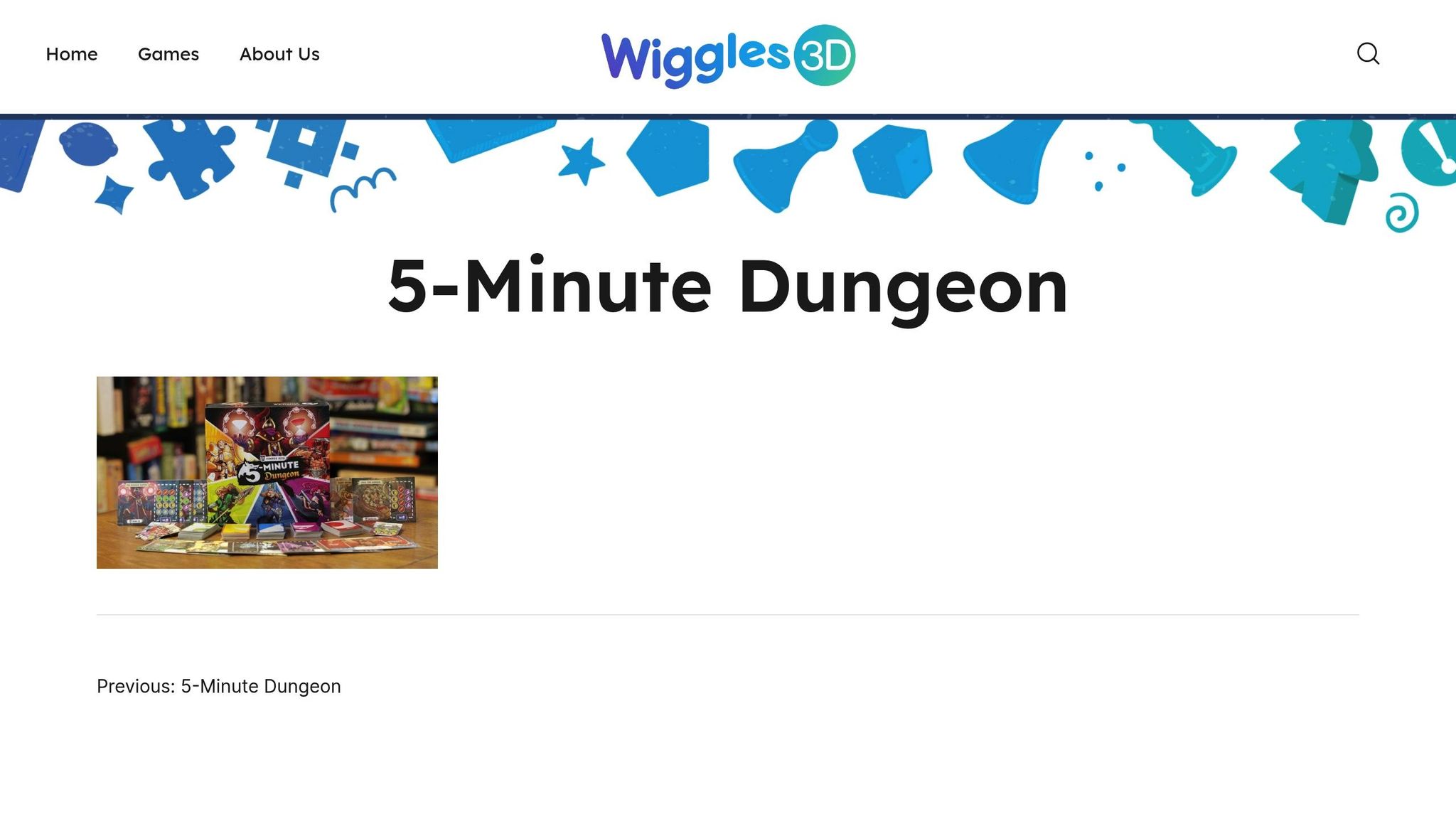
5-Minute Dungeon is a fast-paced cooperative card game where players race against the clock to defeat monsters and overcome obstacles - all within a tight five-minute window. The ticking timer adds a layer of urgency that turns every move into a high-stakes decision.
Timer Type
The game uses a flexible timer system, allowing players to use any mobile timer or a free companion app. Some cards even let players pause the timer, introducing a clever strategic element that can be a game-changer in the heat of the moment.
Player Interaction
Teamwork is the heart of 5-Minute Dungeon. With its fast-paced design, players must communicate clearly and act quickly, leaving no room for one person to take over. This ensures everyone has an active role, making collaboration essential to success.
Gameplay Impact
The timer transforms gameplay into a thrilling rush of adrenaline. As the seconds tick down, players are forced to make split-second decisions, often trading careful planning for risky but necessary moves. This constant pressure leads to unforgettable moments - whether it’s a last-second victory or a chaotic defeat - keeping every playthrough exciting and unpredictable.
2. Magic Maze
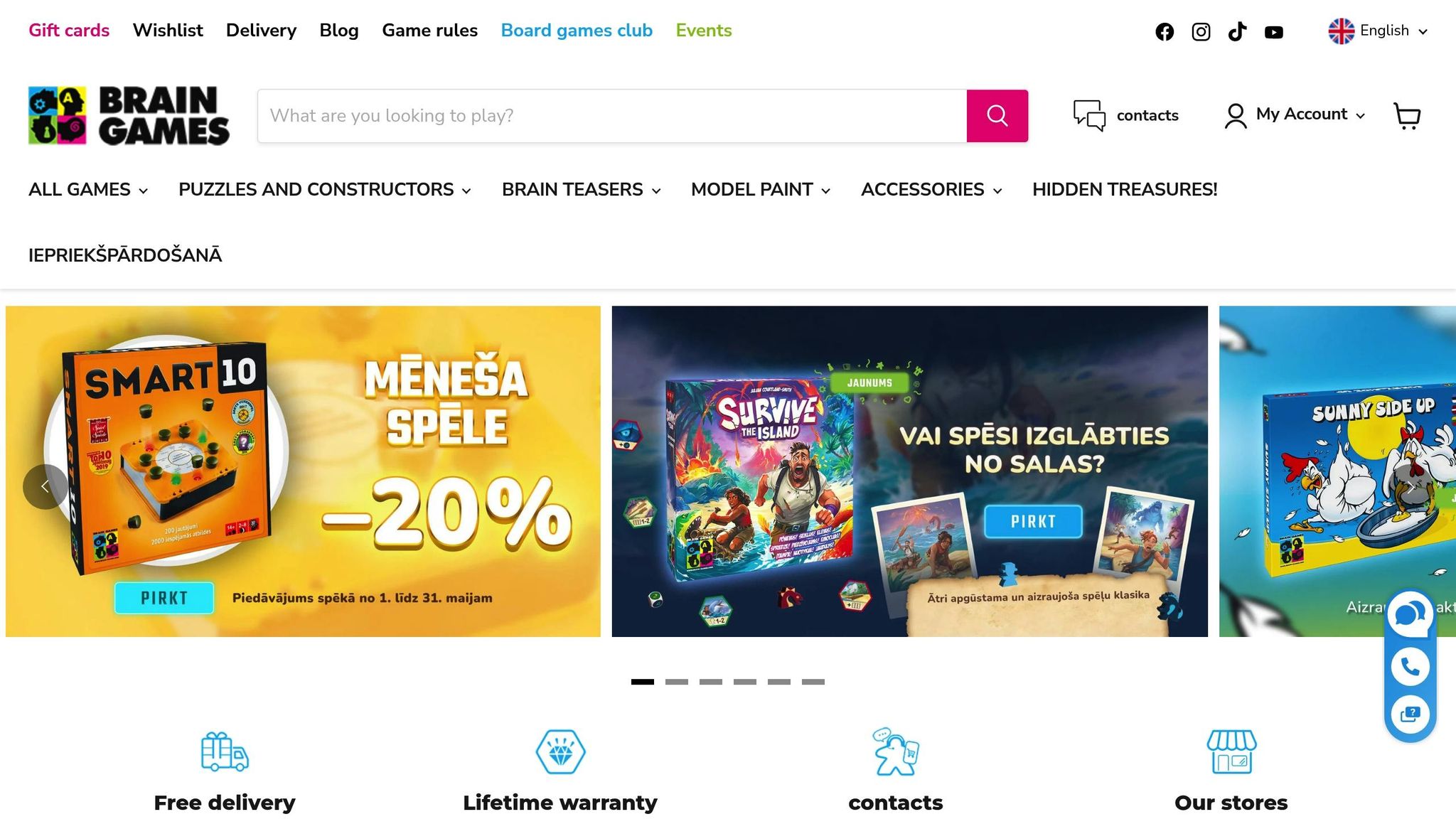
Magic Maze is a cooperative board game where players take on the roles of adventurers attempting a silent mall heist. The goal? Grab the necessary items and escape before the timer runs out.
Timer Type
The game’s tension centers around a three-minute sand timer. Certain hourglass spaces on the board allow players to flip the timer for extra time, but each space can only be used once. Once flipped, these spaces are marked as "Out of Order". This relentless countdown creates a high-pressure environment where every second counts.
Player Interaction
Communication in Magic Maze is unique - players must remain silent while the timer is running. Instead of speaking, they rely on non-verbal cues and a "Do Something" pawn to signal actions. However, when the timer is flipped, the silence is briefly broken, giving players a small window to hash out strategies before diving back into the quiet chaos.
Gameplay Impact
Magic Maze offers 17 progressively harder scenarios, challenging players to juggle careful planning with split-second decisions. The silence forces a blend of anticipation and teamwork, making every session feel fresh and unpredictable. As the sand slips away, strategies evolve, keeping the gameplay both intense and exciting.
3. Space Alert
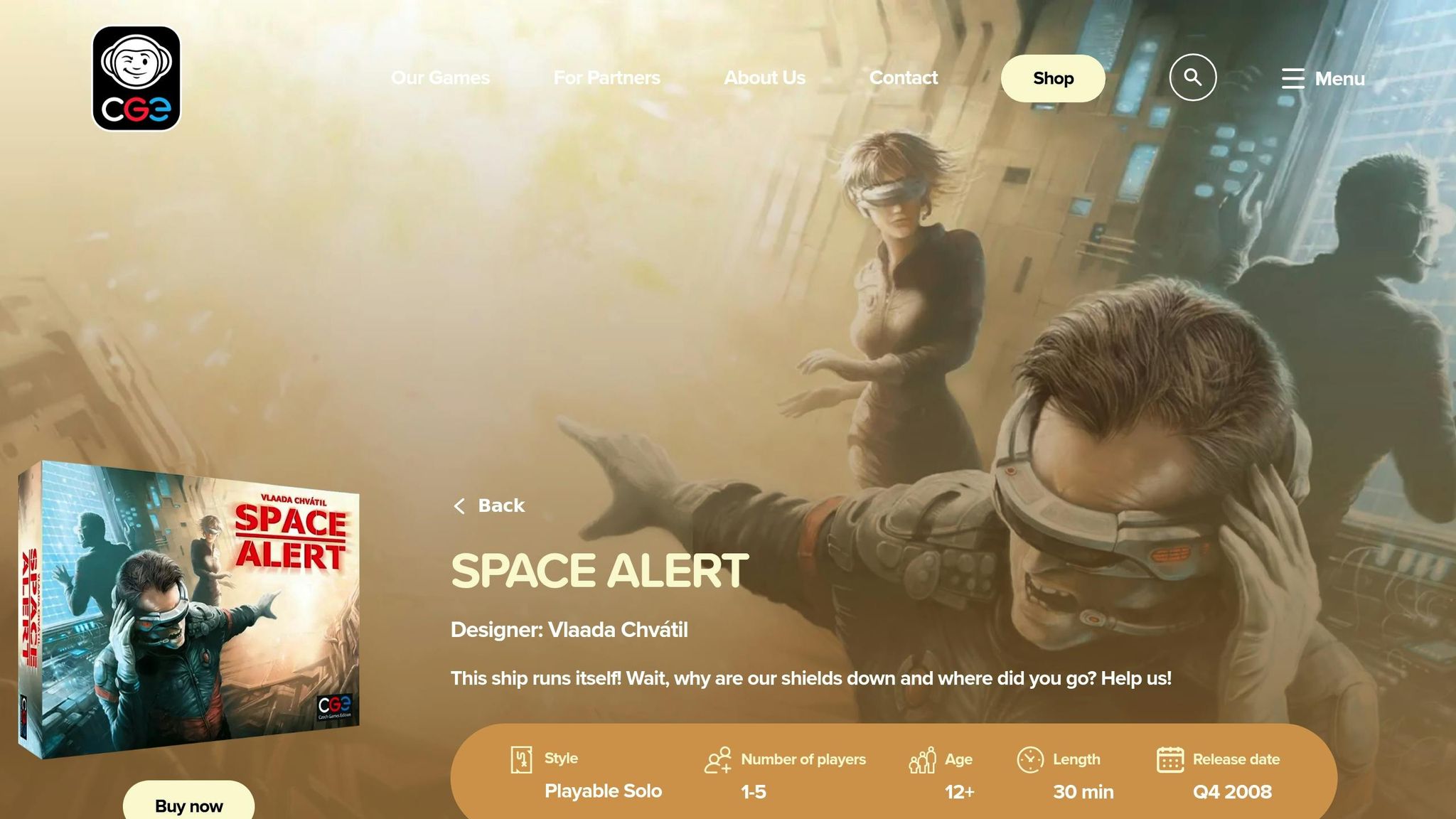
Space Alert puts players in the high-stakes role of managing a spaceship during intense 10-minute missions. Unlike traditional strategy games, this one adds a ticking clock, turning teamwork into a fast-paced, adrenaline-filled experience.
Timer Type
The game uses a 10-minute audio soundtrack that doubles as both timer and mission control. This soundtrack announces incoming threats and key mission events, keeping players on their toes. You can access it through the included CDs or downloadable MP3s.
Player Interaction
Success in Space Alert hinges on quick thinking and flawless teamwork. Players must communicate effectively and make split-second decisions to handle the chaos and keep their spaceship operational.
Gameplay Impact
The real-time countdown adds an extra layer of tension, influencing every aspect of gameplay:
-
Decision Making
Players are constantly balancing careful planning with lightning-fast reactions to address threats and ship malfunctions. -
Team Dynamics
The fast-paced nature of the game puts a spotlight on collaboration. Josh from Board Game Reviews captures this perfectly:"I like that it forces a more frantic game speed (which I believe is the intention behind it)".
-
Mission Structure
Each mission is a race against time, with the audio timer driving the action and ensuring the game stays engaging and dynamic.
4. FUSE
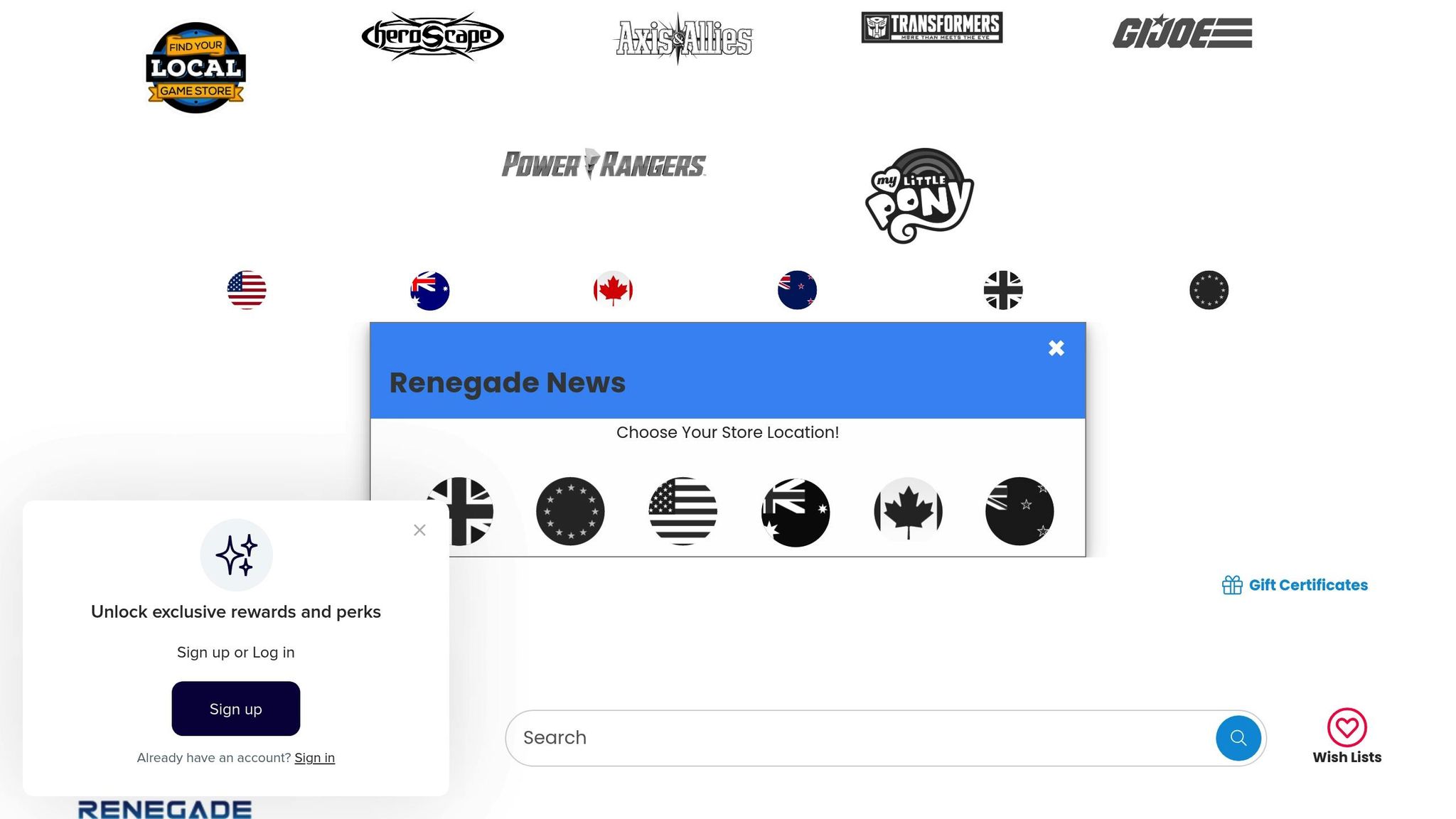
FUSE delivers a high-stakes, 10-minute bomb-defusal challenge that demands teamwork and quick thinking. With a BoardGameGeek rating of 7.0, this fast-paced game keeps players on their toes, blending split-second decisions with cooperative gameplay.
Timer Type
FUSE uses a smartphone app as its timer, adding to the tension with a vocal countdown, sound effects, scoring features, and even high-score tracking.
Player Interaction
The game’s real-time format hinges on strong communication and synchronized dice allocation. As David Norris, Associate Writer, puts it:
"It brings with it all the intensity and pressure of the last 10 minutes of an important exam. Which is what I want from my real-time games."
The ticking clock ensures no single player can dominate the game, forcing everyone to contribute equally and make fast decisions. This constant pressure transforms every move into a critical tactical choice.
Gameplay Impact
| Aspect | Effect |
|---|---|
| Decision Making | Demands quick, instinctive choices under intense time constraints |
| Team Dynamics | Relies on rapid communication and clear prioritization |
| Challenge Level | Offers thrilling victories and crushing defeats in just 10 minutes |
Board Game Quest sums it up perfectly: "While the game is only played over 10 minutes, those are a quick ten minutes. The game seems to fly by and I guarantee that you'll rarely feel like you have enough time."
5. Project: ELITE

Project: ELITE takes the thrill of timers to the next level, blending cooperative combat with fast-paced tactical decision-making. The result? A heart-pounding, two-minute showdown against relentless alien forces.
Timer Type
This game uses an official timer app, complete with thematic music and audio cues, to ramp up the tension. The app doesn’t just keep time - it sets the tone, creating a pulse-pounding rhythm that drives the gameplay forward.
Player Interaction
The real-time aspect of Project: ELITE fosters a unique kind of teamwork. No one player can dominate the action because the timer forces everyone to act simultaneously. Thomas Gorner captures this perfectly:
"The real-time element makes you sit on the edge of your seat, fighting to roll the dice as quickly as possible, while trying to hurriedly communicate with the rest of your team to get the most out of your turn."
Players are constantly on their toes, rolling dice at breakneck speed while shouting out strategies and commands. It’s chaotic, it’s intense, and it pulls everyone into the action from the very first second.
Gameplay Impact
The game’s mechanics lead to a variety of engaging effects:
| Aspect | Effect |
|---|---|
| Decision Making | Forces players to make snap decisions |
| Team Dynamics | Keeps everyone involved, avoiding dominant play |
| Strategic Depth | Encourages on-the-fly adjustments during combat |
| Player Engagement | Delivers unforgettable moments under pressure |
Each round begins with aliens spawning at three key points, immediately throwing players into the thick of it. The combination of quick decision-making and reactive gameplay ensures no one has a chance to tune out. Every second counts, and every move matters.
sbb-itb-1ed942f
6. Galaxy Trucker

Galaxy Trucker takes the idea of building spaceships and turns it into a fast-paced race against the clock. Players scramble to construct their vessels while vying for the best components, blending strategy with real-time chaos for a thrilling experience.
Timer Type
The game uses a classic sand timer to set the pace during the ship-building phase. What's interesting is that the timer's flexibility allows players to agree on the construction time together. This shared control adds a layer of tension, pushing everyone into rapid, simultaneous decision-making.
Player Interaction
The timer injects chaos into the game, forcing players to multitask under pressure. During the timed phase, players must juggle several activities:
- Component Selection: Quickly grab the parts you need before someone else does.
- Ship Construction: Strategically place tiles to build your spaceship.
- Quality Control: Double-check for illegal placements to avoid penalties.
- Resource Competition: Fight for the most valuable components.
"In a nutshell it is a chaotic mess trying to build your ship before time runs out!"
Gameplay Impact
The timer isn't just there to rush players - it ties the game's strategic and chaotic elements together. During the real-time building phase, you’re constantly balancing speed with accuracy, making split-second choices about where to place components. What starts as a methodical building process quickly turns into a frantic race, where every decision feels high-stakes. The pressure to finish your ship while competing for limited resources leads to moments of both triumph and hilarious disaster. And because everyone is playing at the same time, there’s no downtime - just nonstop engagement from start to finish.
7. Time's Up! Party
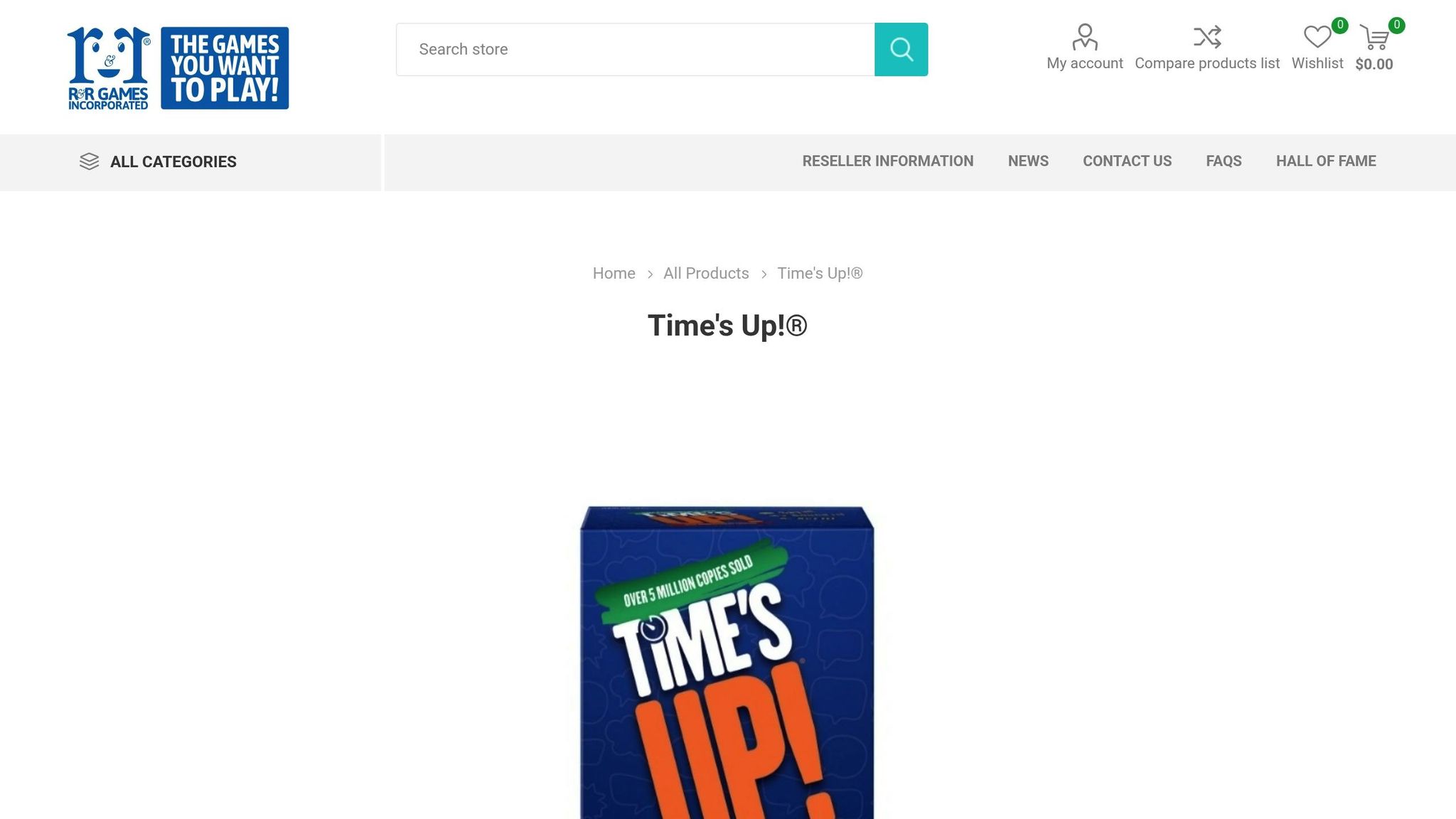
Time's Up! Party takes the familiar concept of charades and gives it a fresh twist by adding a ticking clock and a team-based strategy element. It’s a fast-paced, laugh-filled game that challenges players to think on their feet and adjust their approach as the game evolves. You can learn more about the game here.
Timer Type
The game uses a 30-second sand timer to keep the pace brisk. This constant countdown adds a layer of intensity, making every second count.
Player Interaction
What makes Time's Up! Party stand out is its three-round structure. In the first round, teams can use full sentences to give clues. The second round limits players to single-word hints. And by the third round, communication is restricted to gestures and sound effects.
"As each game moves more and more to sound effects and hand motions, it just gets sillier and sillier – and consequently funnier. But also easier (at least for the guessers) because you've seen all of the words before! You're no longer choosing from a deck of mystery words, you know that you're limited to the same 40 words you saw in that first round." – Anitra Smith, The Family Gamers
This progression not only ramps up the hilarity but also demands adaptability and creativity from players.
Gameplay Impact
The game’s timed rounds keep the energy high, forcing teams to think quickly, adjust their tactics, and rely on memory from previous rounds. With its 40-minute playtime, Time's Up! Party strikes a balance between being fast-paced and thoroughly engaging. The combination of memory recall and shifting mechanics ensures that no two sessions feel the same.
Game Features at a Glance
Here’s a quick comparison of seven timed board games, highlighting key features to help you pick the right one for your next game night. Check out the table below for an overview of what each game brings to the table:
| Game Title | Timer Type | Players | Game Length | Difficulty Level |
|---|---|---|---|---|
| 5-Minute Dungeon | Digital/Phone Timer | 2–5 | 5 minutes | Easy |
| Magic Maze | Sand Timer | 1–8 | 15 minutes | Moderate |
| Space Alert | Digital Timer | 2–5 | 10 minutes | Complex |
| FUSE | Digital Timer | 2–5 | 10 minutes | Moderate |
| Project: ELITE | Sand Timer | 1–6 | 30 minutes | Complex |
| Galaxy Trucker | Sand Timer | 2–4 | 45 minutes | Moderate |
| Time's Up! Party | Sand Timer | 4–12 | 40 minutes | Easy |
This table lays out the basics, but let’s dive deeper into what makes each feature stand out and how they shape the gameplay.
Timers play a pivotal role in defining the pace and intensity of these games. Sand timers bring a tactile element, adding a sense of urgency as the grains slip away, while digital timers ensure precise countdowns and sometimes include sound effects or other features to heighten the experience. For instance, Time's Up! Party uses a sand timer and accommodates the largest group (4–12 players), making it a fantastic choice for lively gatherings.
The player count, game length, and difficulty levels offer something for everyone. If you’re short on time, 5-Minute Dungeon packs a fast-paced, easy-to-learn experience into just five minutes. On the other hand, Project: ELITE delivers a more complex challenge, with its 30-minute gameplay demanding sharp focus and teamwork. Whether you’re a beginner or a seasoned strategist, there’s a game here to match your style.
Ultimately, these features highlight how time constraints not only add excitement but also shape strategies and interactions, ensuring a dynamic experience every time you play.
Summary
Timed board games bring together strategy and excitement, turning traditional gameplay into a race against the clock. The addition of a timer changes how players make decisions and interact with each other, adding a layer of urgency that keeps everyone on their toes.
Research shows that timers help tackle analysis paralysis, encouraging quicker decisions and creating a fast-paced, engaging atmosphere. The pressure of limited time pushes players to trust their instincts rather than overthinking every move. As CatTaxAuditor aptly puts it:
"There is no way to make timers work in a board game without introducing pressure. That's the whole point of them".
But it’s not just about the rush. Timed games also encourage strategic thinking and help players handle stress more effectively. The shared intensity of racing against the clock strengthens bonds between players, making victories feel sweeter and losses more impactful. These elements make timed games an exciting addition to any game night.
If you're ready to spice up your gaming sessions, check out Brain Games' online catalog. Whether it’s the rapid-fire action of 5-Minute Dungeon or the strategic challenge of Project: ELITE, these games promise thrilling experiences that blend time pressure with engaging gameplay.
FAQs
Why do board games with timers make gameplay more exciting?
The Role of Timers in Board Games
Timers in board games bring an exciting layer of urgency, forcing players to think on their feet and act quickly. This added pressure transforms gameplay into a fast-paced, dynamic experience that keeps everyone engaged. By limiting the time for decision-making, timers also help games avoid dragging on, maintaining a lively pace and ensuring no one loses interest.
Timed rounds do more than just speed things up - they also challenge players to think strategically under pressure. Whether you're scrambling to find the right word in a party game or juggling resources in a strategy game, the clock adds an extra layer of tension. Every decision feels more important, making the experience both challenging and memorable.
How can players stay calm and make quick decisions during timed rounds in board games?
To handle the pressure of timed rounds, start by mastering the rules so you can play confidently without pausing to double-check them. Keep your play area neat and have quick reference guides handy to make your turns flow more smoothly. Use the downtime during other players' turns to plan your next move, keeping yourself focused and prepared.
You can also practice speeding up your decision-making by setting personal time limits during casual games. Work on streamlining your choices, trusting your gut, and recognizing game patterns to act more efficiently. If the time crunch starts to feel overwhelming, pause for a deep breath to reset and regain focus. These simple approaches can help you stay composed, make quicker moves, and fully enjoy the excitement of timed gameplay.
What is the best board game for large groups, and why?
If you're searching for a board game that works well with larger groups, Codenames is a fantastic pick. Designed for up to 8 players, it emphasizes teamwork, sharp communication, and clever strategy. The inclusion of timed rounds keeps the gameplay lively and energetic, so everyone stays engaged. Whether it's a game night with friends or quality time with family, Codenames promises plenty of laughs and unforgettable moments.






